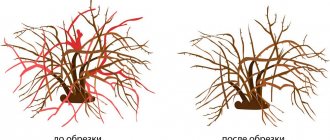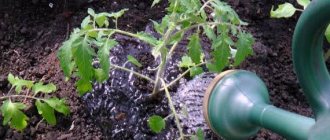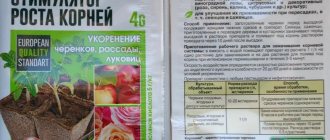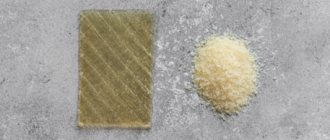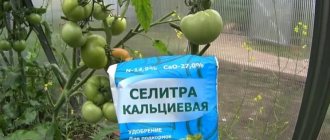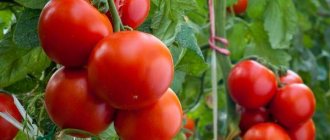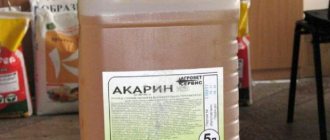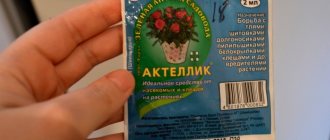Tomato is one of the most beloved crops by vegetable growers. And nowadays you can hardly find a vegetable garden or greenhouse where these vegetables grow. And the abundance of varieties (from super early to late) makes it possible to obtain ripened tomato fruits already in the first or second ten days of June.
Breeders are developing new varieties of this vegetable crop that are highly resistant to most diseases that affect plants from the Solanaceae family. But it still happens that tomatoes are affected by certain types of diseases or pests settle on the bushes.
How to cope with diseases and pests, what preventive measures to take to treat tomato bushes from diseases and pests will be discussed below.
Most often, in garden beds we have to fight various types of fungal diseases (from which no vegetable is immune), as well as the most common pests - aphids, mole crickets and some others.
What are fungicides and their types for?
Fungicides are used to protect gardens and vegetable gardens from fungal diseases. These drugs can be chemical or biological. Fungicidal agents are used for the prevention and treatment of the most dangerous fungal diseases, which not only affect the appearance of fruits and yield indicators, but can lead to the death of cultivated plants.
Varieties by composition
Main types of fungicidal agents:
- simple, consisting of one active substance;
- combined, including several active components.
Varieties by composition:
- chemicals that affect pathogens (Bordeaux mixture, Abiga-Peak, Topaz and others);
- biological, based on spores of beneficial fungi and bacteria (Gamair, Fitosporin-M and others).
By release form:
- powders;
- solutions;
- suspensions;
- emulsions.
Varieties by purpose
Fungicidal agents are used:
- for processing planting and seed material;
- for preventive spraying during the growing season;
- for the treatment of diseased crops;
- for preventive soil treatment;
- for spraying the harvested crop.
Preventive treatment of tomato seeds
You should start protecting tomatoes from diseases from the seeds. If seed material is purchased in specialized stores from well-known seed manufacturing companies, then pre-sowing treatment may not be necessary. Seeds of any vegetables (including tomatoes), offered for sale by well-known companies, are already disinfected, treated with growth preparations and have almost 100% germination.
But if vegetable growers independently collect seed from the varieties of tomatoes they like in order to plant it later in their beds, then such seeds are subject to pre-sowing treatment. Immediately before planting such seeds for seedlings (or directly into the ground), they are soaked for half an hour in a weak solution of potassium permanganate for disinfection. Then the seed is washed under running water and immersed in water in which any growth accelerator is dissolved so that the seeds begin to germinate.
Sprouted tomato seeds are ready for planting.
Mechanism of action and what fungicides are intended for
The very definition of “fungicide” consists of two words: “fung” - mushroom, “cide” - destroy. The meaning of the term is a means that kills fungi. Fungicides, or rather bactericides, include drugs that act on bacterial infections. Types of fungicidal agents by nature of action:
- protective or preventive;
- curative or eradicative;
- immunizing or increasing resistance to the pathogen.
Fungicidal agents are:
- contact – affecting the pathogen through direct contact (based on sulfur, copper and other components);
- systemic - penetrating into plants (based on triazole, oxatiine, benzimidazole);
- contact-system.
The fungi first settle on the surface, but soon penetrate inside through the mouths and pores. The development of the pathogen can occur externally and in the internal organs of crops. It is for this reason that fungicides are produced that destroy fungi not only on the surface, but also inside plants. Types of fungicidal agents by selective activity:
- only against powdery mildew fungi;
- only against powdery mildew fungi;
- against true and downy mildew.
The mechanism of action of fungicidal agents on the pathogen:
- drugs of chemical origin - disrupt breathing, suppress nuclear fission, inhibit energy metabolism, suppress the formation of nucleic acids, block the formation of ergosterol, etc.;
- drugs of biological origin - compete with pathogenic strains, release toxins to destroy pathogens, and immunize the culture.
How to protect tomatoes from diseases
Even if tomato seeds have been pre-treated against most diseases, this does not mean that tomato seedlings or bushes will remain strong and healthy throughout the season.
Tomatoes can be affected by diseases caused by fungi, bacteria or viruses. This happens most often because vegetable growers do not follow the rules for caring for seedlings and adult plants and constantly plant tomatoes in the same places without following the rules of crop rotation. Also, much depends on the location of the beds, as well as on weather conditions in a particular summer season. The most common diseases that can affect tomatoes are fungal diseases.
Below we will talk about the most common diseases that affect tomatoes, methods of combating them, and how tomatoes are treated against diseases.
Brown rot affecting fruits (late blight)
Late blight is the most dangerous of all fungal diseases that affect vegetable plants from the nightshade family (potatoes, tomatoes, eggplants and peppers). Potatoes are the first to start to get sick in the season, then the disease spreads to tomatoes and other vegetable crops.
When vegetables are infected with this fungal disease, the yield loss will be several times greater than from other diseases, especially in root crops. The causative agent of late blight can overwinter in plant debris that is not removed from the garden in the fall, in the soil, on wooden and other parts of greenhouse structures. The spores of this fungus are very resistant to various external influences; they can be transferred with wind, rain, or on clothing, during watering.
In greenhouse conditions, the appearance of late blight is provoked by the following conditions: high humidity and a difference in day and night temperatures of more than 5°C. Under such conditions, excess moisture settles on the greenhouse structures and on the foliage of the tomatoes. Over time, spots of brown color appear on the foliage of tomatoes; gradually the affected foliage turns yellow, dries out and falls off. Unripe tomato fruits are also covered with dark spots that appear not only on the skin, but also inside the fruit. Sick tomatoes will not ripen further; they begin to rot and disappear. If external signs of the disease are not visible on ripe tomatoes, and late blight has damaged only their internal contents, then such a harvested crop will begin to rot after some time.
You can protect plants from this disease by observing the following preventive measures:
- do not grow any vegetable plants belonging to the nightshade family nearby;
- follow the rules of crop rotation and do not plant tomatoes after potatoes, peppers and eggplants;
- if last season plants damaged by late blight grew in the beds, then tomatoes and other vegetables of the nightshade family should not be planted in such a place for 4 seasons;
- seedlings and adult plants should not be thickened;
- the lower foliage of mature plants should be removed;
- after watering, loosen the soil, while simultaneously removing weeds (especially nightshade representatives);
- watering should be regular (as the soil dries), the beds should not be over-wetted, watering should be done in the morning;
- do not get carried away with excessive application of nitrogen to the soil; fertilizing tomatoes with fresh manure is unacceptable;
- In order for tomatoes to bloom better and produce more ovaries, they need to be treated with a solution of boric acid;
- the greenhouse must be regularly ventilated, opening not only the doors, but also the windows;
- all plant residues after the end of the season are collected and burned;
- greenhouses after harvesting (as well as in the spring before planting seedlings) are disinfected with a solution of bleach;
- It is better to grow early varieties of tomatoes in order to collect ripened fruits before the end of July, when late blight usually begins to develop.
Comment!
It should be remembered that not a single tomato variety or hybrid is highly resistant to this fungal disease. Some recipes for preventive spraying of tomatoes:
- Before planting in open ground or immediately after transplanting, seedlings are treated with Bordeaux mixture (0.1% solution). If necessary, this treatment is repeated every two weeks from the moment until the tomatoes begin to ripen. The harvest can be harvested for the first time a week after the last treatment.
- Dilute 1 tbsp in a bucket of water. l copper chloroxide and this solution is used to treat tomato bushes.
- The soil surface is treated with wood ash.
- Processing tomatoes with kefir solution. To do this, 5 glasses of kefir are diluted in 10 liters of water. The first treatment is carried out 10-14 days after transplanting the tomato seedlings to a permanent place. The frequency of spraying tomatoes with this solution is 7 days. This treatment helps prevent the development of this fungal disease.
- If folk remedies do not help save tomatoes from late blight, then chemical solutions should be used to combat the disease.
- At the first symptoms of the disease, tomato bushes and soil are treated with a 1% solution of potassium permanganate.
- 20 grams of Oxychom powder (or 2 tablets) are diluted in a bucket of water and the tomatoes are processed. This drug is used at the first signs of this fungal disease. In total, no more than three sprayings are carried out. After the last treatment, ripe fruits can be used for food no earlier than 5-6 days later.
- The new product “Profit”, which does not penetrate into the fruit and aerial parts, helps to cope with this disease very well. 20 grams of this product are diluted in a bucket of water and the tomato bushes are treated if vegetable growers notice the first signs of this fungal disease. In total, no more than 2 plant treatments should be carried out. After the last spraying, the fruits should not be eaten for 3 weeks.
Brown leaf spot
This fungal disease primarily affects tomato foliage. Typically, plants are affected by this disease during the period of flowering and ovary formation.
It is not worth treating diseased plants with folk remedies - even garlic infusion is ineffective against this fungal disease. Therefore, to combat the onset of a fungal disease of tomatoes, chemical preparations such as Oksikhom, Fundazol and some others are used. These products should be diluted according to the attached instructions. After treatment with chemicals, the fruits are not eaten for at least 10-14 days.
After harvesting, all tops are collected and destroyed. The soil is spilled with a solution of potassium permanganate, and in greenhouses all surfaces are thoroughly treated with a solution of bleach.
Apical rot
If depressed dark brown spots appear on the lower part of the tomato fruit, this indicates that the plant is affected by blossom end rot. This disease appears when tomatoes lack certain minerals, in particular calcium.
In the initial stage of the disease (when a small number of fruits are affected), plants should be treated with calcium nitrate. This product is diluted as follows: 1 teaspoon of the drug is added to a bucket of water and stirred thoroughly. You can spray plants with this solution once a week up to 5-6 times per season. You can apply a solution such as liquid fertilizer “under the root” of tomatoes immediately after watering.
Bacterial canker of tomatoes
This dangerous disease can damage any of the above-ground parts of tomatoes. The first symptoms are 10-12 days after planting the seedlings in a permanent place, some leaves begin to fade. After a couple of months, if no measures are taken, the infected bush dies.
There are no methods to combat the disease. Therefore, at the first signs of disease, diseased tomatoes should be removed and destroyed immediately. And when planting, diseased seedling bushes should be thrown out immediately.
Gray rot
This disease affects all above-ground parts of tomatoes grown in greenhouse conditions. Preventive measures to prevent the disease:
- ventilate greenhouses more often;
- do not thicken plantings;
- remove the lower foliage of tomato bushes.
Advice! Damaged areas should be cut off with a sharp tool, and the cut areas should be treated with crushed charcoal.
Fusarium wilt
This fungal disease can damage tomatoes both in garden beds and in protected ground. The first symptoms of the disease are the foliage of the plants lightens, then turns yellow. The disease begins to appear during the period of mass ripening of the crop.
To prevent the development of the disease, the following preventive measures should be taken:
- follow the rules of crop rotation;
- replace the soil in greenhouses after harvest (or spill it in the fall with a bleach solution).
Blackleg
This disease most often occurs in seedlings grown at home. A black color appears on the stems at the base, as a result the shoots begin to rot and break easily.
Causes of the disease:
- accumulation of moisture in the soil;
- room temperature is too low;
- dense plantings;
- insufficient air ventilation in the room.
Diseased plants should be treated with the following preparations:
- Bordeaux mixture (solution concentration - 1%);
- copper sulfate – solution concentration 0.5%;
- potassium permanganate – slightly pink solution.
You can watch a video on how to deal with the main diseases of tomatoes:
Why do picked tomato seedlings turn yellow?
I have sometimes observed that after picking, tomato seedlings on the windowsill begin to turn yellow. I want to say that this happens due to improper growing conditions. So low illumination during short daylight hours can be the reason for this. It is necessary to arrange additional lighting so that there is at least 15 hours of daylight per day.
The cause of yellowing seedlings may be improper soil composition. Heavy soil, poorly permeable to moisture, acidic soil composition, low aeration can be the causes of yellowing. The seedlings must be ventilated, taken out to the balcony, coarse sand and peat added to the soil mixture, and not overfed with nitrogen. Then the tomato seedlings will delight you with dark greens and thick stems.
Copper sulfate
Many gardeners are familiar with tomato diseases such as black leg, white rot and gray rot. One of the most effective methods of disinfecting land before planting is treatment with copper sulfate. Before the tomato fraternity is planted in the garden, the soil should be thoroughly disinfected. Two level tablespoons of copper sulfate should be carefully diluted with 10 liters of cold water and allowed to brew a little. This solution should be used to water the plot of land prepared for tomatoes.
Wood ash tincture
You can maintain and treat tomato bushes affected by powdery mildew using infusions of plant waste. Typically, wood ash is used for the spraying procedure when a white coating appears. It must be filled with hot water and left for a week in proportions of 1 part ash to 10 parts water. The finished solution must be poured into a clean container, leaving a cloudy, unnecessary sediment. You can spray tomato bushes with this infusion until the white coating disappears.
6 varieties of pepper tomatoes that will delight you with an abundance of harvest
By providing tomatoes with proper care and timely treatment against diseases, you can achieve a rich harvest to the envy of your neighbors and to the delight of the gardener.
"Epin-extra"
Description
Synthetic phytohormone corresponding to the natural one. The drug "Epin-extra" is non-toxic . Sold in ampoules of 1 ml = 40 drops. It is a clear liquid. Susceptible to destruction in light and in an alkaline environment. Store in a dark place. Prepare solutions based on boiled water
Instructions
At the stage of tomato seed germination:
- prepare a solution in the following proportion: 3 drops of Epin-extra per 100 ml of boiled water;
- the germination container is filled with a substrate made from a mixture of sand, perlite and pure chernozem in a ratio of 1:1:1;
- spread tomato seeds evenly on the surface;
- deepen them into the ground with a stick;
- the spout of the seed should rise slightly above the surface;
- lightly sprinkle with earth;
- left to germinate.
At the growth stage of tomato seedlings, a spray solution is used in the ratio of 1 ampoule per 5 liters of water. Spray once every 2 weeks. The drug is well absorbed and absorbed by plants within 14 days. There is no need to re-spray before this time.
The drug helps maintain the balance of substances in young plants. The seedlings do not stretch and remain strong and healthy throughout their growth.
Methods of fertilizing
Fertilizing the soil is carried out using 2 main methods:
- Dissolved fertilizers are applied directly to the roots. The manipulation is quite convenient and simple. It is worth considering that the efficiency of this method of irrigation is somewhat reduced, since most of the solution penetrates into the soil and goes inside. It turns out that some part of the fertilizer does not directly enter the root system of tomatoes.
- Another method is spraying. It is done on the ground around the bushes of the plant, along the stems and leaves. In this option, the main part of the nutrients is gradually absorbed and reaches the roots in larger quantities.
Important! Before using water for diluting fertilizers, it must settle.
This is done so that chlorine disintegrates under the influence of the sun, and all the harmful impurities contained in tap water precipitate.
Gardeners often advise using rain or melt water. One “but” – it is not always possible to obtain or extract it.
Before using any of the remedies listed in the article to improve the condition of tomato bushes, it is important to make sure that the tomatoes are not affected by pests or diseases.
After all, the ovary is often missing or falls off when the bush is infected with wireworms, whiteflies, May beetles, mole crickets or cutworms.
Excessive moisture levels lead to tomato bushes becoming infected with a fungal infection. As a result, the plant dies completely or only part is affected. Therefore, it is important to minimize all negative aspects, and then carry out fertilizing and spraying.
Have a good tomato harvest in the new season!
Prevention measures
To reduce the likelihood of infestation with black aphids or other varieties, preventive measures are necessary.
- Pay attention to large concentrations of garden ants in your garden or vegetable garden. Their anthills may contain aphid eggs. To effectively combat these pests, it is recommended to first remove the ants from your area.
- Even in the early stages of infection, take comprehensive measures. A female can lay more than 2 thousand eggs in a month, which leads to rapid proliferation of the colony. Even at the initial stage of infection, it is better to use several control methods.
- Plant repellent plants and attract ladybugs to your area.
Serum
Tomato serum has proven itself to be one of the universal medicines for various diseases. Treating bushes with whey not only reduces the risk of diseases by creating a film on the plant, but also significantly saves the gardener’s budget. After the dairy product has soured, the remaining whey is stored for further use. With the onset of the first days of July, you can use the following composition for processing tomatoes: 1 liter of whey is diluted in the same amount of water. You can spray plants with this simple infusion no more than once every 10 days.
The danger of late blight
Phytophthora infestans is a fungus that reproduces by zoospores. Translated from Latin it means “destroying plants.” The name speaks for itself; the fungus completely destroys the plant tissue it enters. Causes a disease - late blight. Most often, nightshades (potatoes, eggplants, peppers, tomatoes) are infected.
The spores spread quickly in high humidity conditions and can cause irreparable damage to farms. Signs of late blight appear in early July. During this period, the most favorable conditions for the growth of the fungus develop: high air humidity (above 75%), temperature fluctuations day and night, abundant morning dew.
Reference . In dry and hot weather, the development of the disease stops, and the spores themselves quickly die in the heat.
Signs of late blight damage to tomatoes:
- dark brown spots on leaves, stems and fruits;
- white fluffy coating on the back of the leaves;
- deformation of tomatoes.
The photo shows tomato leaves affected by late blight.
